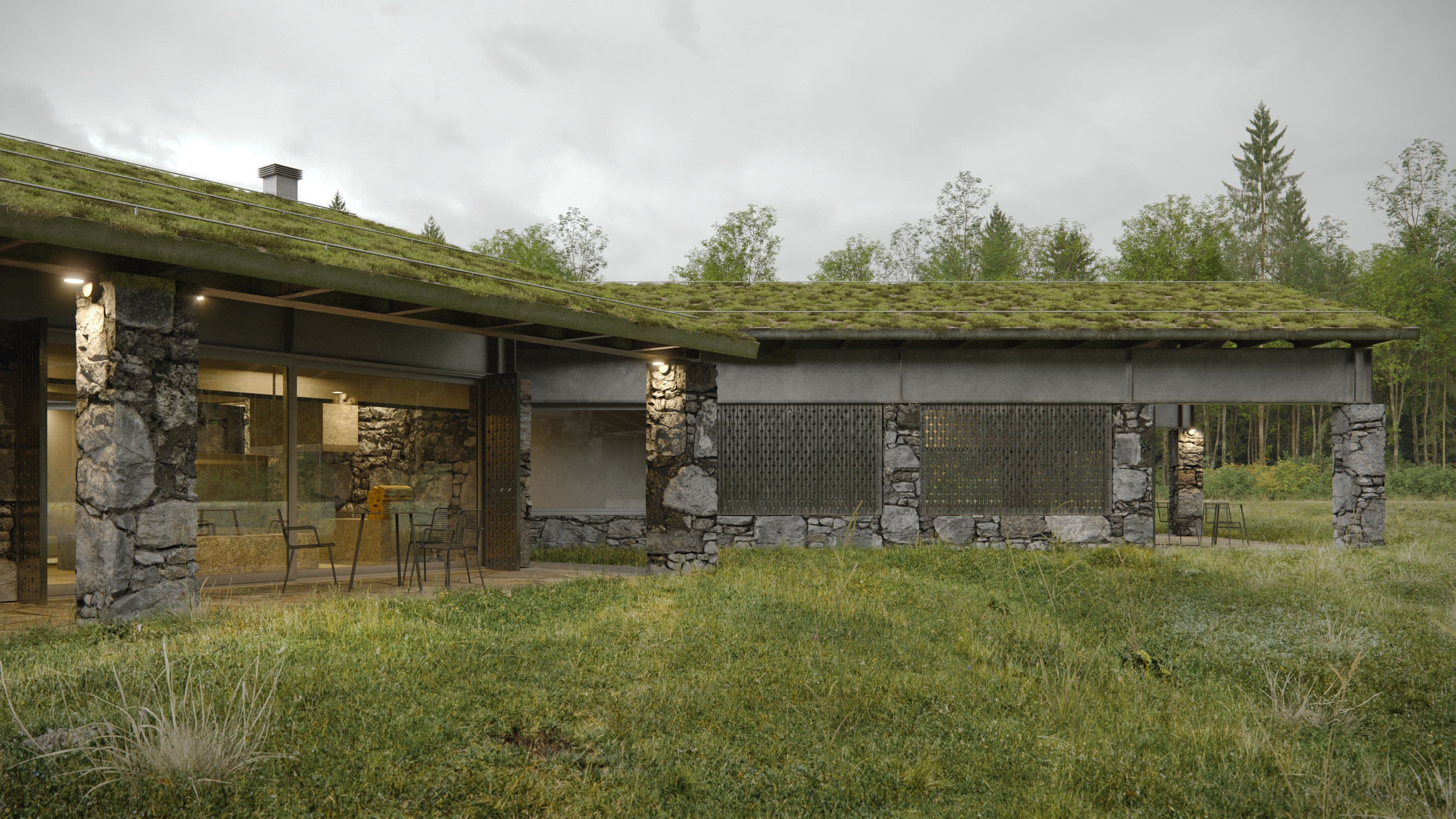villa MOX
villa MOX
Private Villa
Saint Petersburg
2023
Design Development
Stanislav Kozeen, Marcelo Rueda
The MOX landscaping firm
Kirill Kozlov
The central element of the composition is a triangular courtyard that unites all the living spaces of the house and serves as a quiet, peaceful area for relaxation and creativity. The courtyard is formed by the intersection of three volumes, each distinguished by its facade and functional content.
The first, northeastern volume serves as the main entrance and houses all the technical facilities and a sauna. The second, western volume contains a large hall divided by a kitchen into two living rooms, which can be combined or separated as needed. The third, southwestern volume includes five bedrooms, three children’s rooms, and two master bedrooms. Each room has its own bathroom and wardrobe.
Additionally, the house features three covered terraces that provide more space for comfortable living. The plot is located in the north of St. Petersburg, adjacent to abandoned Finnish villages built from granite. The proximity to the Republic of Karelia and its granite quarries also influenced the choice of the primary material for the house. In some areas, the granite masonry on the walls extends into the interior of the house, visually connecting the external and internal spaces. The green roof softens the brutality of the walls, making the house appear gentler and kinder, blending it into the surrounding landscape. It is difficult to discern where nature ends and the house begins. The only elements that emphasize the modernity of the house are the steel I-beams and large sliding windows, which, when opened, erase all physical boundaries.
The central element of the composition is a triangular courtyard that unites all the living spaces of the house and serves as a quiet, peaceful area for relaxation and creativity. The courtyard is formed by the intersection of three volumes, each distinguished by its facade and functional content.
The first, northeastern volume serves as the main entrance and houses all the technical facilities and a sauna. The second, western volume contains a large hall divided by a kitchen into two living rooms, which can be combined or separated as needed. The third, southwestern volume includes five bedrooms, three children’s rooms, and two master bedrooms. Each room has its own bathroom and wardrobe.
Additionally, the house features three covered terraces that provide more space for comfortable living. The plot is located in the north of St. Petersburg, adjacent to abandoned Finnish villages built from granite. The proximity to the Republic of Karelia and its granite quarries also influenced the choice of the primary material for the house. In some areas, the granite masonry on the walls extends into the interior of the house, visually connecting the external and internal spaces. The green roof softens the brutality of the walls, making the house appear gentler and kinder, blending it into the surrounding landscape. It is difficult to discern where nature ends and the house begins. The only elements that emphasize the modernity of the house are the steel I-beams and large sliding windows, which, when opened, erase all physical boundaries.
